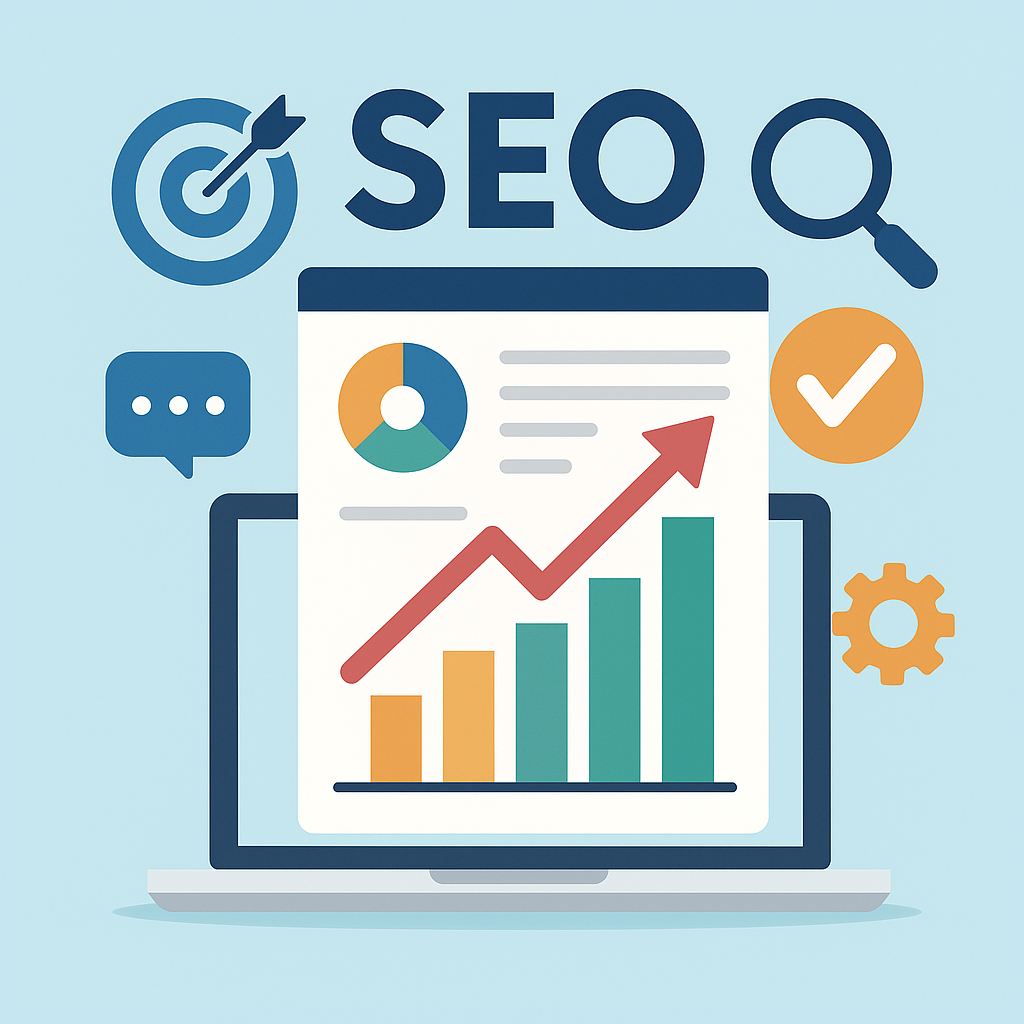In today’s competitive online space, just “doing SEO” is no longer enough. Without a well-defined strategy, your efforts can become muddled, inconsistent, and less effective.
That’s where an SEO roadmap comes in—a detailed, step-by-step plan that aligns your SEO activities with your business objectives and delivers measurable outcomes.
If you want to rank higher, generate more organic traffic, and boost conversions, here’s exactly how to develop an SEO roadmap that truly delivers results.
1. Define Clear Goals and KPIs
Before you start optimizing, ask yourself:
- What do you want to achieve?
- Is it more traffic, higher rankings, more leads, or stronger brand awareness?
Set SMART goals (Specific, Measurable, Achievable, Relevant, Time-bound) and decide on KPIs such as:
- Organic traffic growth percentage
- Keyword ranking improvements
- Conversion rate from organic visitors
- Domain authority increase
Tip: Your SEO goals should match your overall business objectives, not just vanity metrics.
2. Conduct a Comprehensive SEO Audit
A roadmap without knowing your starting point is like setting out on a trip without a map.
Your audit should cover:
- Technical SEO: Site speed, mobile-friendliness, crawlability, broken links
- On-Page SEO: Keyword usage, meta tags, content quality
- Off-Page SEO: Backlink quality and quantity
- User Experience: Navigation, design, engagement metrics
Recommended Tools: Google Search Console, Ahrefs, SEMrush, Screaming Frog.
3. Conduct Targeted Keyword Research
Keywords are the building blocks of your roadmap. Look beyond search volume and focus on user intent.
Consider targeting:
- Informational keywords—for guides and blogs
- Transactional keywords—for service or product pages
- Navigational keywords—for branded searches
Tip: Use long-tail keywords to capture high-intent, low-competition queries.
4. Prioritize Technical Fixes
Even the best content won’t rank if your site has technical problems. Address issues like:
- Broken links and redirects
- Poor Core Web Vitals (LCP, FID, CLS)
- Weak site structure
- Missing HTTPS security
- Outdated or missing XML sitemap
5. Develop a Content Strategy
Your content should be consistent, relevant, and valuable.
Plan for:
- Different content types: blogs, guides, videos, infographics
- A content calendar for regular publishing
- Topic clusters for stronger SEO authority
Tip: Update and repurpose old content to keep it fresh and relevant.
6. Construct a Solid Backlink Strategy
High-quality backlinks remain one of Google’s strongest ranking signals.
Effective strategies include:
- Guest blogging on high-authority sites
- Creating shareable content (case studies, infographics)
- Link-building outreach campaigns
- PR-based backlink acquisition
7. Implement On-Page Optimization
Each page should be optimized for both users and search engines:
- Compelling, keyword-rich titles and meta descriptions
- Clear heading hierarchy (H1, H2, H3)
- Optimized images with descriptive alt text
- Internal links for navigation and SEO flow
8. Track, Measure, and Adjust
SEO is not a “set it and forget it” process. Use analytics tools to monitor and refine your strategy.
Track:
- Keyword rankings
- Organic traffic trends
- Pages with high impressions but low CTR (and optimize them)
Adjust your approach based on what’s working—and eliminate what’s not.
Final Thoughts
An SEO roadmap keeps your strategy clear, focused, and measurable. The key is flexibility—search engine algorithms and user behavior evolve, so your roadmap should evolve too.
With these steps, you won’t just have a plan on paper—you’ll have a proven system that produces genuine, long-lasting results.

